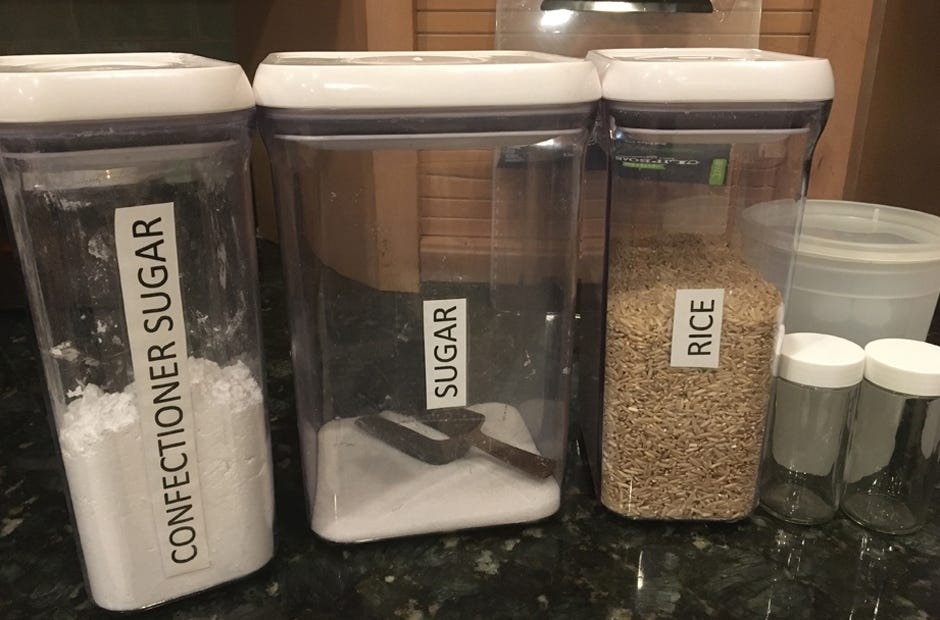![Storage containers should be clearly marked. See-through containers allow you to quickly inventory what is low and needs replenishing. [Pamela H. Allen | Special to the News Bulletin]](http://127.0.0.1/wordpress/wp-content/uploads/2022/01/ghows-DA-57130f73-0138-0500-e053-0100007f3dcf-14c90b76.jpeg)
With fall around the corner and school starting back, it is time to take an inventory of your pantry. You should really dig in and see what is lurking in the dark reaches of your back shelves.
This task should be done on a regular basis to help keep foods rotated and use products that are close to expiration. It is also a good idea to refresh items that are low and you use often.
Many times we are caught in the middle of preparing our favorite dish and find we are out of an ingredient. By planning and taking stock of what is in your pantry, it will be easier to plan quick and easy meals and hopefully avoid that trip to a fast food establishment to pick up something quick.
Basic supplies on hand will keep you prepared to put together a family-friendly meal or a last-minute dinner for friends. Try to plan four or five favorite recipes that your family likes and then keep these items on hand by keeping an inventory of your most used items.
A well-stocked and organized pantry will streamline menu planning and save time on daily food preparation. Your family will thank you for a well-organized pantry that is easy to use, where they can find items that they most often like to eat.
Here are some tips to get started:
1. Decide where you will house your pantry. It can be a designated cabinet, standalone structure or a built in pantry. The idea is to define where you will keep these supplies for easy access and organization.
2. Inventory what you currently have and use these items first. There are many good inventory ideas you can find online. Keep a clipboard handy with your inventory list so that you can quickly see what you have on hand and what you need to add to the grocery list. Look for cost-saving sales to stretch your food budget. Many local stores are running buy-one-get-one sales, so capitalize on these items.
3. Menu planning should be a weekly task to save time and money at the grocery store. As you plan out a week's worth of meals, make a shopping list you have checked against items you have on hand. Meal planning should be centered on seasonal availability and family preferences.
4. Build up your pantry gradually. Make a priority list of what is needed now and what you could purchase for future use. Be careful to not overbuy items that could expire before use.
5. Use storage containers that you have on hand. Glass containers like canning jars make great storage units for staples. The glass also allows you to see what is in the jars quickly. Remember to label items with stickers. In some cases you may need to put the purchased date. These containers will also assist in keeping pests at bay.
6. Food safety considerations are important in the pantry. Discard any bulging cans or items that have expired. Keep your pantry clean and wipe down shelves regularly.
Each home pantry should reflect the needs and preferences of the family members. The amount of space and food budget will dictate the size and amount of goods. Remember to build your pantry to suit your family and this will save time and provide opportunities to quickly prepare meals at home.
Pamela H. Allen is the interim county director and an agent at the University of Florida's Institute of Food and Agricultural Sciences Extension office in Crestview.


This article originally appeared on Crestview News Bulletin: 6 tips for building a well-stocked pantry
